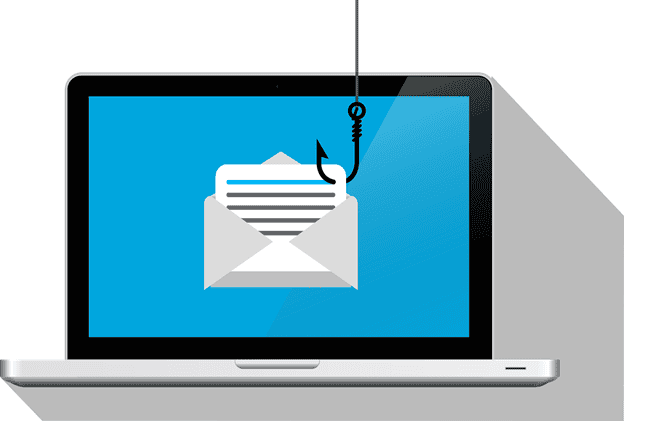- Protect your business against phishing by implementing multi-factor authentication (MFA), using advanced email filtering tools, and regularly updating software to close vulnerabilities.
- Build a cybersecurity-aware culture through regular training, simulated phishing exercises, and encouraging employees to report suspicious activity.
- Use tools like threat detection software and secure backups to prepare for potential attacks. Partnering with managed service providers (MSPs) can also guarantee continuous protection and access to advanced resources.
Phishing attacks remain one of the most prevalent threats to businesses of all sizes. Attackers who pose as trusted entities to steal sensitive information have evolved significantly over time. While phishing attacks often target emails, they can also exploit other communication channels like text messages, phone calls, and social media platforms. This means your business needs to recognize and defend against phishing’s multiple forms to stay safe.
What Is Phishing?
Phishing is a cyberattack to deceive individuals into revealing sensitive information, such as login credentials, credit card numbers, or confidential company data. These attacks often masquerade as legitimate communications from banks, vendors, or internal departments. Emails are the most common medium, but phishing has extended to text messages (smishing), phone calls (vishing), and social media platforms.
To identify phishing attempts, watch for emails that create a sense of urgency or use threats to provoke immediate action, such as warnings about account suspension. Suspicious links and attachments are another hallmark of phishing emails, as they often lead to malicious websites or files that install malware. Poor grammar and spelling mistakes can also indicate phishing since many attackers operate outside their targeted regions and aren’t fluent in the local language.
Building a Culture of Cybersecurity Awareness
Your employees are the first line of defense against phishing, and their knowledge can make or break your defenses. Start by conducting regular cybersecurity awareness training sessions to teach employees how to recognize phishing tactics, such as fake links, unexpected requests for sensitive information, or unfamiliar sender addresses. Make this training an ongoing process that evolves as phishing tactics change.
Simulated phishing exercises can help reinforce this training by testing how well employees respond to realistic scenarios. These simulations can also highlight areas where additional education is needed. Encourage employees to report suspicious emails or messages without fear of judgment as well.
Implement Multi-Factor Authentication (MFA)
One of the simplest yet most effective measures against phishing is multi-factor authentication (MFA). MFA adds an extra layer of security by requiring users to verify their identity in multiple ways, such as entering a password and a one-time code sent to their mobile device. Even if a hacker manages to steal a password, they would still need access to the second verification method, making unauthorized access significantly more difficult.
MFA should be implemented across critical business systems, including email platforms, financial applications, and customer relationship management (CRM) tools. Encourage your employees to use MFA on personal accounts as well, as compromised personal accounts can sometimes lead to vulnerabilities in business systems.
Use Email Filtering Tools
Phishing emails often bypass basic spam filters, so investing in advanced email filtering tools is a good idea. These tools use sophisticated algorithms to detect and block phishing emails before they reach your employees’ inboxes. They analyze incoming emails for signs of phishing, such as suspicious domains, unusual patterns in sender behavior, and potentially harmful links or attachments.
By quarantining emails flagged as suspicious, email filtering tools provide an additional layer of protection, giving IT teams the opportunity to review and safely handle questionable messages.
Keep Software Updated
Outdated software creates vulnerabilities that attackers can exploit, making regular updates a critical part of your cybersecurity strategy. Automating updates keeps operating systems, browsers, and essential business applications running the latest versions with up-to-date security patches, which in turn keeps your business safe.
Don’t overlook third-party tools, plugins, and extensions, which can also be targeted by attackers. Regularly review and update these tools to close potential gaps in your defenses.
Verify Links and Attachments
Phishing emails often use links and attachments to trick recipients into downloading malware or visiting malicious websites. Encourage your employees to hover over links before clicking to verify their authenticity. Legitimate URLs should match the sender’s official website and avoid redirects to unknown domains.
Attachments should also be approached cautiously. Employees should only open files from trusted sources, and these should be scanned with antivirus software before opening. If an email seems suspicious, employees should directly contact the sender using a verified method rather than responding to the email.
A secure network is a fundamental defense against phishing attacks. Firewalls, for example, filter incoming and outgoing traffic, creating a barrier between your internal network and external threats. Data encryption makes sure that even if information is intercepted, it remains unreadable to unauthorized users.
Network segmentation is another important strategy. By dividing your network into sections, you can limit access to sensitive areas, reducing the impact if one part of the network is compromised.
Regularly Back Up Data
Even the best defenses can’t guarantee 100% protection against phishing attacks. Having a thorough data backup plan means your business can recover quickly in the event of an attack. Automated backups help capture the most recent versions of your data without requiring manual intervention, while cloud-based solutions offer secure, scalable storage that can be accessed from anywhere.
Testing your backups is just as important as creating them. Periodic tests let you check that your backup system works as expected and that you can quickly restore operations if necessary.
Monitor and Respond to Threats
Staying ahead of phishing attacks requires constant vigilance. Threat detection software, such as security information and event management (SIEM) systems, can identify suspicious activity the moment it happens and alert your IT team to potential threats. Reviewing system logs regularly can also help detect signs of unauthorized access or unusual activity.
A clear incident response plan is another great safety measure, as it allows your team to act quickly to contain and mitigate any incidents. The plan should include isolating affected systems, notifying stakeholders, and preventing future attacks.
Stay Informed About New Tactics
Cybercriminals are constantly developing new phishing techniques, so follow reputable cybersecurity blogs and newsletters to keep up with the latest trends and threats. Professional networks and industry events can also provide valuable insights and strategies.
Partner with Cybersecurity Experts
For many SMBs, managing cybersecurity in-house can be overwhelming. Partnering with cybersecurity experts provides access to advanced tools and knowledge that may be out of reach otherwise. Managed service providers (MSPs) can oversee your cybersecurity efforts so that your systems are protected 24/7.
Phishing attacks are a persistent threat, but they don’t have to derail your business. Let our team at CMIT Solutions of North Pittsburgh keep you cybersafe. Contact us today!





